Clove is an evergreen dried, unopened flower bud, and it is a crucial spice known for its flavor and medicinal value. Clove (Syzygium aromaticum) is a tropical perennial tree that belongs to the family Myrtaceae, and its small reddish-brown flower buds are used as a spice. The cloves were essential in the early trade of spices and are thought to be native to the Indonesian island of Moluccas. But, first, let’s check out the best fertilizer for the Clove tree.
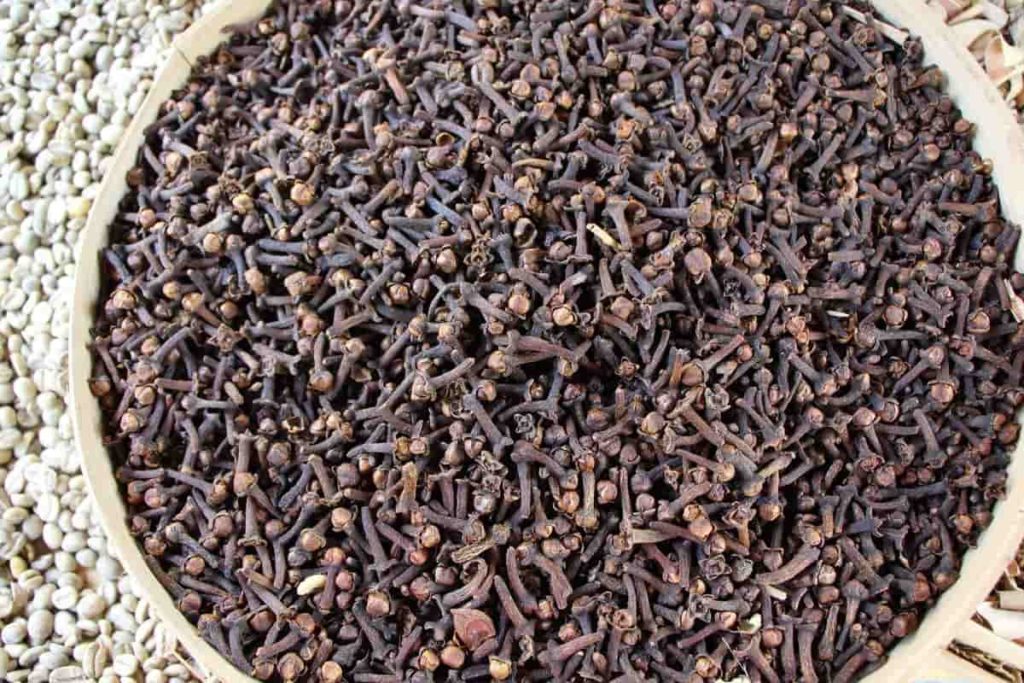
The best yield of the crop resulted in large cloves at close spacing, of N and K, more P, but low lime. The need for fertilizer and lime was related to the pH and the soil adhesion level for available Ca, K, P, and Mg.
Fertilizer importance in Clove trees
Commercial clove trees are fertilized with complete manures and mineral fertilizers. Plant fertilizers should be applied based on soil test reports. Fertilizers provide nutrients to crops such as potassium, phosphorus, and nitrogen, which allow crops to grow larger, faster, and produce more food. The essential nutrient for plant growth is nitrogen, and plants absorb more nitrogen than any other element. To grow nutritious, healthy crops, farmers need to make sure they have healthy soil. Then, when the crop is harvested, essential nutrients are removed from the soil.
If the soil is not filled with nutrients through fertilizers, crop yields will deteriorate. To grow, plants need nitrogen compounds from the soil, which can be produced naturally or supplied by fertilizer. However, excessive fertilizers release harmful greenhouse gases into the atmosphere and eutrophication of our waterways. Scientists are currently trying to find solutions to reduce the environmental impact of fertilizers without reducing the amount of food we use while using them.
In case you missed it: Clove Farming Project Report, Income, Yield, Profit
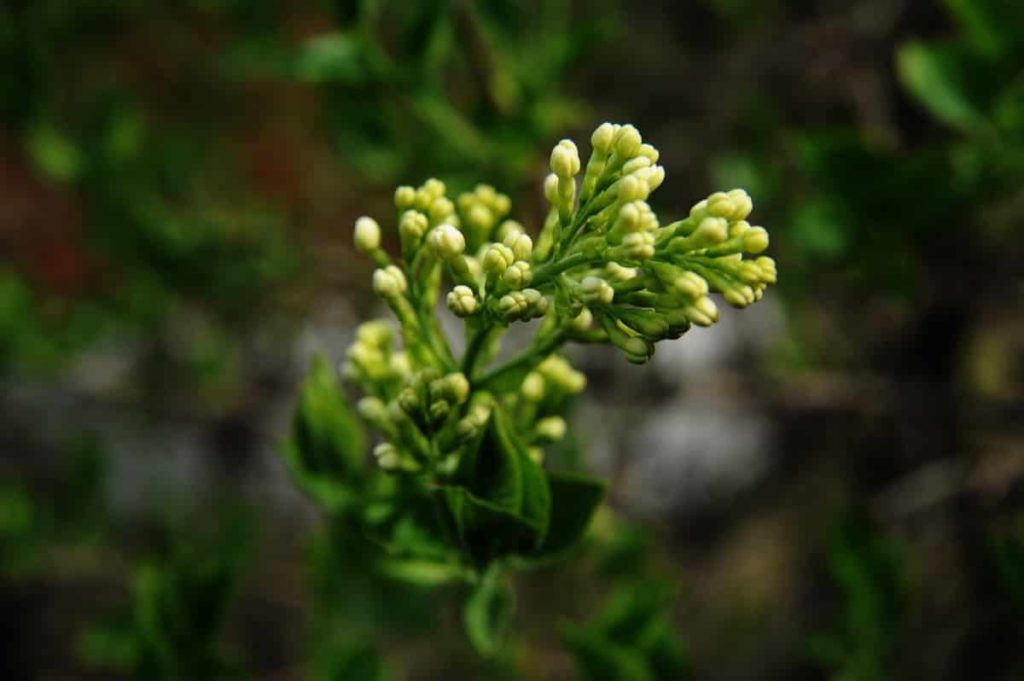
The plant needs the nutrients necessary for its uninterrupted growth at plant growth time. Adding fertilizers to the soil ensures that the plant gets proper nutrition during its development. Fertilizers increase plant tolerance against pests. It has reduced their dependence on pesticides and herbicides, thus creating healthy crops. As a result, there is a reduction in disease, which gives crops an aesthetic value. Fertilizers improve the plant water holding capacity and increase the depth of roots.
Organic fertilizer application
Cattle compost or manure by 50 kg and bone meal or fish meal by 2 to 5 kilograms per tree per year can be applied. It can be applied as feed-in trenches dug around trees at the beginning of the rainy season. Organic fertilizers are usually used at the start of the rainy season in the areas where cloves are grown.
Apply organic fertilizers at the beginning of any rainy season, such as compost, bone meal, or fish meal. Once the plant has started germinating, use Super Phosphate MOP (Muriate of Potash) or Potassium Sulphate plant food. When a clove tree over 15 years old is used for feeding, double the amount of fertilizer. Then, until the harsh summer is over, add the fertilizer to the distributed feed in the trenches you have dug outside the plant.
Best fertilizer for Clove tree
Fertilizer application time
- Apply organic manure in May-June with the onset of the southwest monsoon.
- Divide the fertilizer evenly with organic fertilizers in shallow trenches dug around the plant at a distance of about 1 to 1.5 m from the herbs in May-June and September-October.
- If the soil is very acidic, 500 gms of lime per plant should be applied in alternate years.
- Apply cattle manure or compost at 50 kg per tree/year.
In case you missed it: District Wise Crop Production in Tamil Nadu
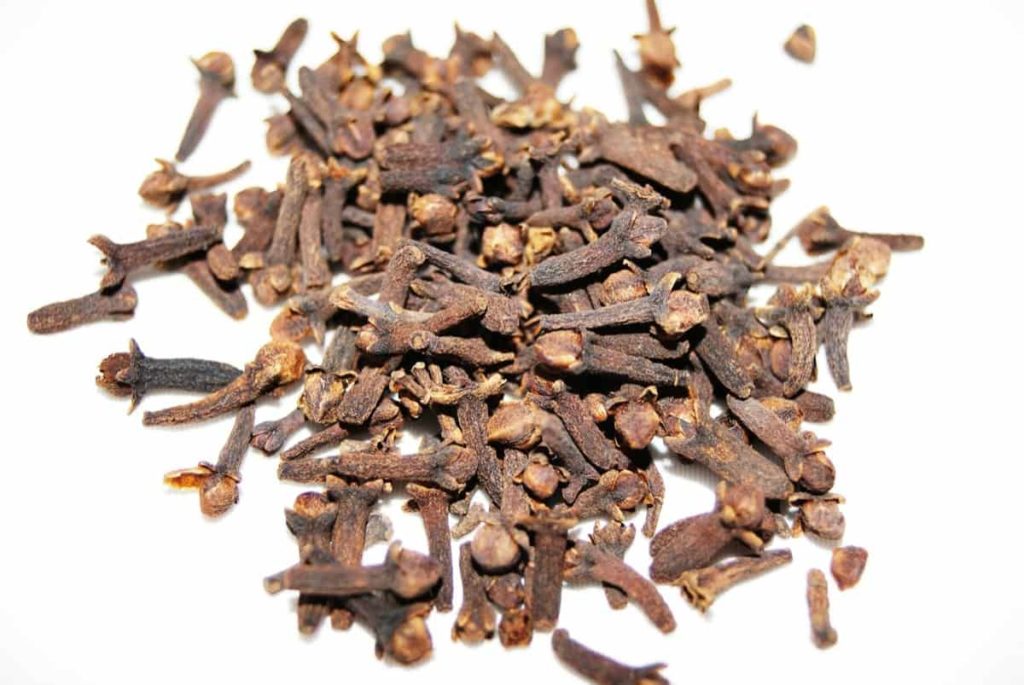
Compost manure
For Clove trees, manure is done during the monsoon. In the first year, two or three months after planting, farmyard manure or compost is applied at 4 kg per plant. During the second year, four kilograms more farmyard manure is applied with the onset of monsoon. In addition, 25 grams of Muriate Of Potash should be added in July. It should be repeated in the same proportion in September-October. Manure can be mixed with soil and applied at 10-15 cm and 15-20 cm from the plant base.
The eight-year-old tree adds one kilogram of ammonium sulfate, fifty kilograms of compost, superphosphate, and Muriate of potash. With the onset of the monsoon in June-July, half the dose of organic fertilizer was applied in the trenches dug around the plant 1 to 1.5 meters from the plant base. Apply manure for Clove trees regularly and for their proper growth and flowering as given below;
| Age of the plant | Compost (kg) | Urea (gram/tree) | Super Phosphate (gram/tree) | Muriate of Potash (gram/tree) |
| First-year | 15 | – | – | – |
| Second-year | 20 | 80 | 220 | 160 |
| Annual increase per year | 5 | 40 | 110 | 80 |
| Tree of 15 and above | 50 | 600 | 1560 | 1250 |
NPK fertilizer
For clove plants, it is one of the essential nitrogen fertilizers. However, the amount of nitrogen in the soil is not sufficient for the growth and development of the clove plant.
In case you missed it: Clove Oil Extraction Methods, Process Guide
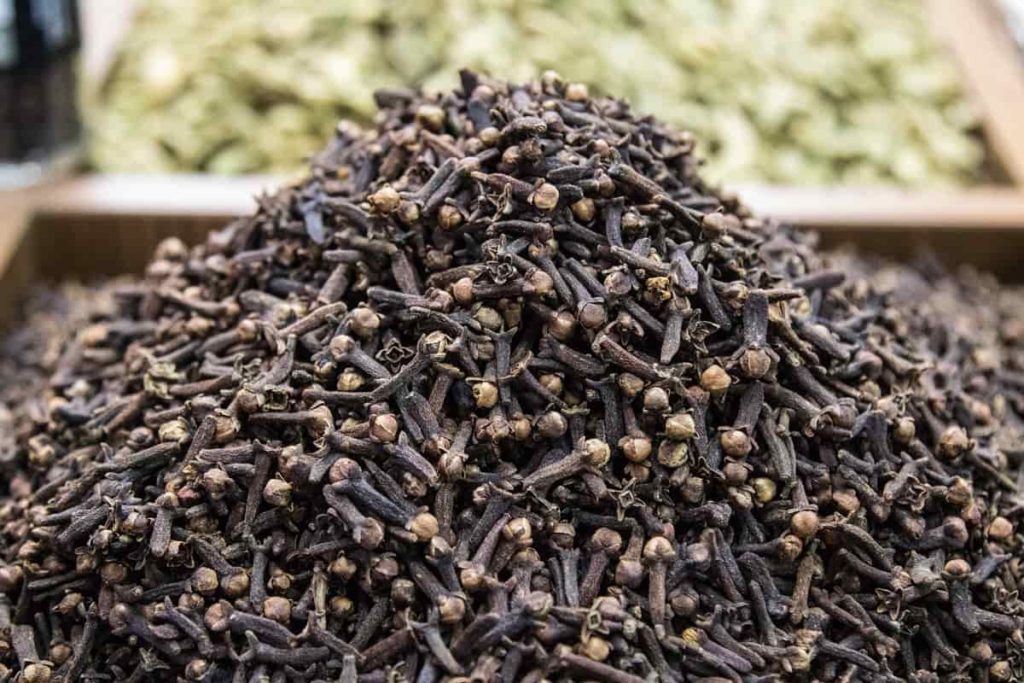
NPK application for adult plants
The nutritional recommendation for a 15-Year-Old adult plant is 300: 250: 750 grams NPK / plant. The fertilizer dose is 651 grams of urea, 1388 grams of rock phosphate, and 1252 grams of Muriate of potash per plant, respectively. Fertilizers are to be applied in distributed quantities. The first split is to be planted in May-June. At this time, Urea, Rock Phosphate, Muriate of Potash require 325 grams, 694 grams, and 626 grams per plant, respectively.
The second fertilizer dose is to be applied in September-October and is 325 grams of urea, 694 grams of rock phosphate, and 626 grams of mortise of potash per plant, respectively. Acidic soils need to be applied two weeks before applying lime or dolomite fertilizer. Organic fertilizer is recommended at 15 kg per plant per year. Apply fertilizer in shallow trenches dug around the plant, about 1 to 1.25 meters from the base.
Nutritional recommendation for young plants
For Clove plants, the nutrient recommendation for the first year is 20:18:50 g NPK / plant. The amount of fertilizer is used directly to obtain the said food. The fertilizer dose is 43 grams of urea, 100 grams of rock phosphate, and 83 grams of potash per plant. Fertilizers are to be applied in distributed quantities. The first split is to be planted in May-June. Urea, rock phosphate, and mortise of potash are 22 grams, 50 grams, and 42 grams per plant, respectively.
The second fertilizer dose is to be applied in September-October, and the dose is about 21 grams of urea, 50 grams of rock phosphate, and 41 grams of Muriate of Potash per plant, respectively. Acidic soils need to be applied two weeks before applying lime or dolomite fertilizer. Organic fertilizer is recommended at 10 kg per plant per year. The dose must be increased with years of growth (1-15) to obtain cloves for different years.
Fertilizer application method
Nutrition management is based on soil test results, particularly organic fertilizer and bio-fertilizers. If the nitrogen fertilizer is too high, the crop becomes too juicy and suffers from pests and diseases. On the other hand, if the dosage is too low, crop growth is delayed. Therefore, farmers should use an adequate number of fertilizers for better results. Phosphatic fertilizers should not be applied in all seasons as the residual phosphate of last season will also be available in the current season.
In case you missed it: Clover Cultivation (White); Farming; Planting Methods
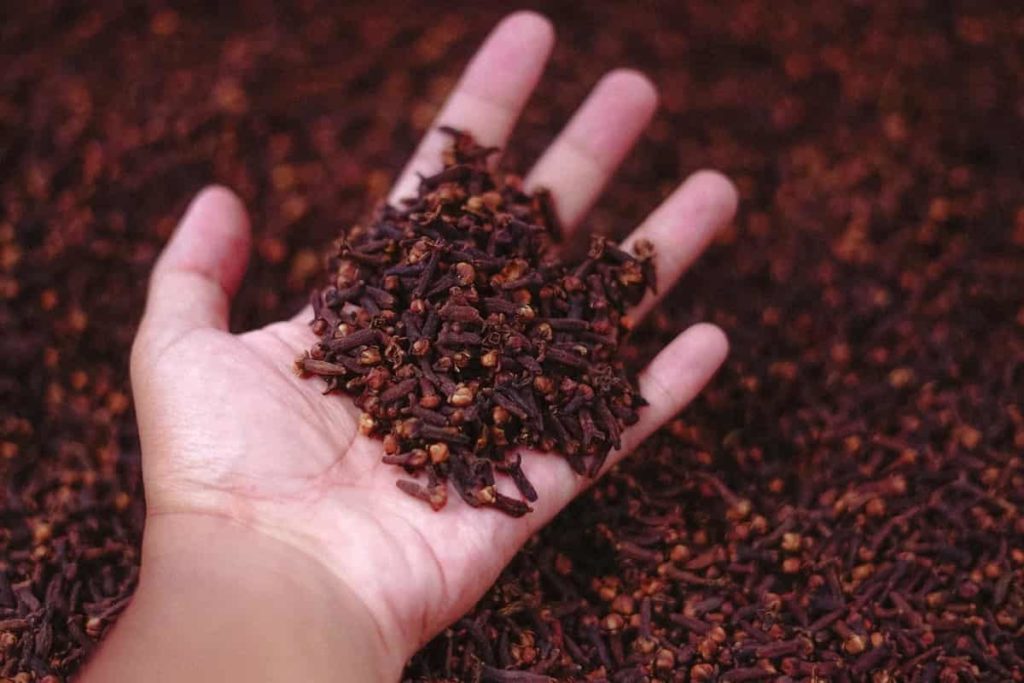
Bio-fertilizers
Apply balanced nutrient application dose using biofertilizers based on the soil test report. Bio-fertilizers focus on mycobacteria and plant growth-promoting rhizobacteria (PGPR).
Nutrient deficiencies in Clove trees
Nitrogen deficiency
Symptoms – Nitrogen is a highly active element in plants. Therefore, deficiency symptoms will first appear in the old and lower leaves. Early signs will change from light green to light green color on the plant leaves. Early defoliation is also noticed.
Management – Add plenty of organic matter to the soil each year. Add biofertilizers such as Azospirillum. Check that the recommended fertilizer is applied on time. Then, go for soil analysis and understand the extent of depletion. Apply nitrogen fertilizer like urea in a divided quantity based on soil test results. As an immediate solution, use urea as a foliar spray (10 g / liter of water) once in 15 days until the deficiency is complete. Also, frequent use of organic growth promoters is beneficial.
Phosphorus deficiency
Phosphorus is an essential nutrient in fertilizers. Fertilizer performance depends on efficient phosphorus content, fertilizer application methods, soil characteristics, and crop stress. Phosphorus found in cell protoplasm plays an essential role in cell growth and proliferation. Phosphorus fertilizer is helpful for plant root development.
Symptoms – Phosphorus is most needed for root development. Root development will be affected in poor conditions. Then this results in a lack of essential nutrients. Symptoms of phosphorus deficiency will first appear in the old and lower plant leaves. Older leaves will have brown spots.
In case you missed it: Clove Cultivation, Planting, Care, Harvesting Guide
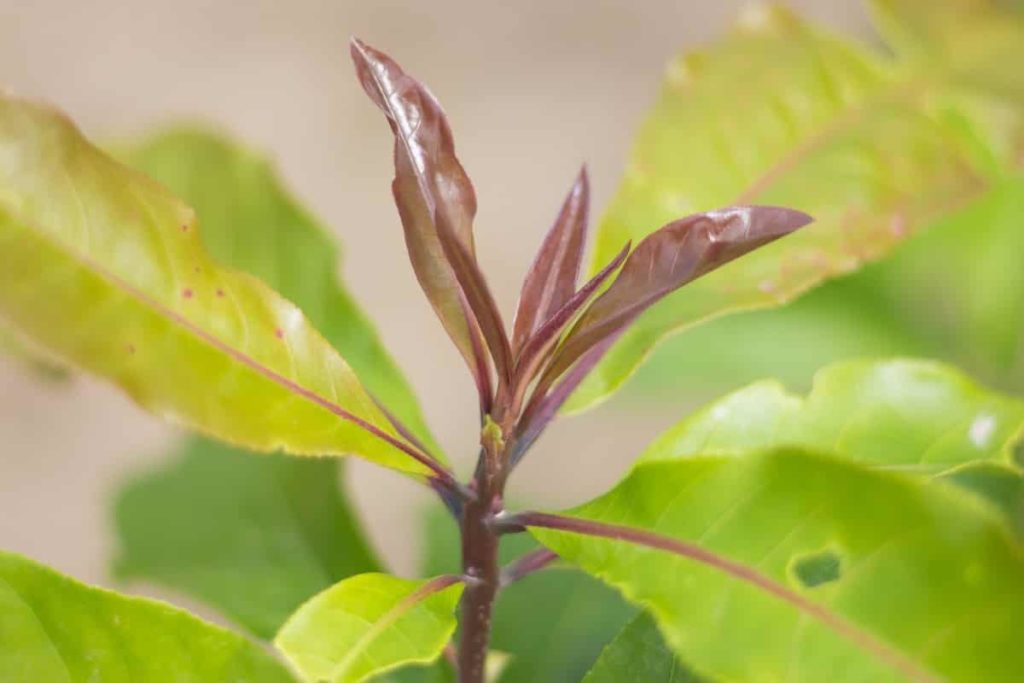
Management – Phosphorus is best absorbed from roots in the pH range of 6.5-7.5. So, adjust the pH level in acidic soil by adding lime/dolomite. Add organic fertilizers containing phosphorus-soluble bacteria to organic fertilizers to increase phosphorus availability. Check that the recommended fertilizer amount is applied on time. Carefully go for soil analysis and understand the extent of depletion. According to the soil test report, use single superphosphate for immediate accuracy or bone meal or fertilizer like rock phosphate for long-term accuracy.
Potassium Deficiency
Symptoms – Potassium is a highly active element in plants. Therefore, deficiency symptoms will first appear in the old and lower leaves. In some cases, irregularly distributed chlorotic spots appear, but the symptoms begin at the tip of the leaf in all cases. Usually, the base of the leaf is dark green.
Management – The maximum availability of potassium is above soil pH 6.0. Thus, correct the soil pH level by adding lime/dolomite to the acidic soil. First, though, add organic matter and wood ash to the soil. After that, apply organic fertilizer containing potash activating bacteria to remove irreplaceable potassium from the soil. Next, apply Muriate of Potash (MOP) based on the soil test report. A split application is more beneficial. Apply sulfate of potash (SOP) with foliar spray by 10 grams per liter of water in the morning with moisturizing agents.
- Types of Pesticides Used in Agriculture: A Beginner’s Guide
- Economical Aquaculture: A Guide to Low-Budget Fish Farming
- 15 Common Planting Errors That Can Doom Your Fruit Trees
- How to Make Houseplants Bushy: Effective Tips and Ideas
- Innovative Strategies for Boosting Coconut Pollination and Yield
- Pollination Strategies for Maximum Pumpkin Yield
- The Complete Guide to Chicken Fattening: Strategies for Maximum Growth
- Natural Solutions for Tulip Problems: 100% Effective Remedies for Leaf and Bulb-Related Issues
- Revolutionizing Citrus Preservation: Towards a Healthier, Greener Future
- Natural Solutions for Peony Leaf and Flower Problems: 100% Effective Remedies
- Maximizing Profits with Avocado Contract Farming in India: A Comprehensive Guide
- Natural Solutions for Hydrangea Problems: 100% Effective Remedies for Leaf and Flowers
- The Ultimate Guide to Choosing the Perfect Foliage Friend: Bringing Life Indoors
- From Sunlight to Sustainability: 15 Ways to Use Solar Technology in Agriculture
- The Ultimate Guide to Dong Tao Chicken: Exploring from History to Raising
- The Eco-Friendly Makeover: How to Convert Your Unused Swimming Pool into a Fish Pond
- Mastering the Art of Delaware Chicken Farming: Essentials for Healthy Backyard Flocks
- 20 Best Homemade Fertilizers for Money Plant: DIY Recipes and Application Methods
- How to Craft a Comprehensive Free-Range Chicken Farming Business Plan
- Brighten Your Flock: Raising Easter Egger Chickens for Beauty and Bounty
- How to Optimize Your Poultry Egg Farm Business Plan with These Strategies
- Subsidy for Spirulina Cultivation: How Indian Government Schemes Encouraging Spirulina Farmers
- Ultimate Guide to Raising Dominique Chickens: Breeding, Feeding, Egg-Production, and Care
- Mastering the Art of Raising Jersey Giant Chickens: Care, Feeding, and More
- Ultimate Guide to Raising Legbar Chickens: Breeding, Farming Practices, Diet, Egg-Production
- How to Raise Welsummer Chickens: A Comprehensive Guide for Beginners
- How to Protect Indoor Plants in Winter: A Comprehensive Guide
- Ultimate Guide to Grow Bag Gardening: Tips, Tricks, and Planting Ideas for Urban Gardeners
- Guide to Lotus Cultivation: How to Propagate, Plant, Grow, Care, Cost, and Profit
- Agriculture Drone Subsidy Scheme: Government Kisan Subsidy, License, and How to Apply Online
- Ultimate Guide to Raising Araucana Chickens: Breed Profile, Farming Economics, Diet, and Care
- Bringing Hydroponics to Classroom: Importance, Benefits of Learning for School Students
- Ultimate Guide to Raising Polish Chickens: Breed Profile, Farming Economics, Diet, and Care
- Ultimate Guide to Raising Australorp Chickens: Profile, Farming Economics, Egg Production, Diet, and Care
- Silkie Chicken Farming: Raising Practices, Varieties, Egg Production, Diet, and Care
- Sussex Chicken Farming: Raising Practices, Varieties, Egg Production, Diet and Care
This is some awesome blog.Thanks for sharing